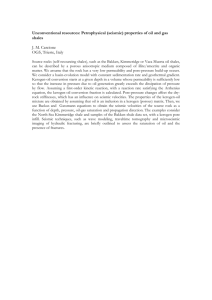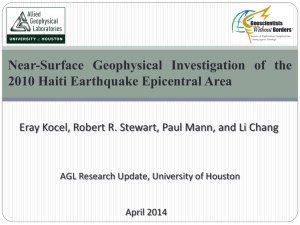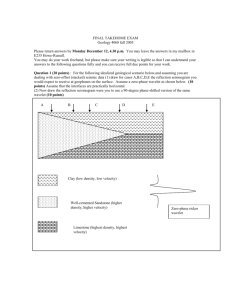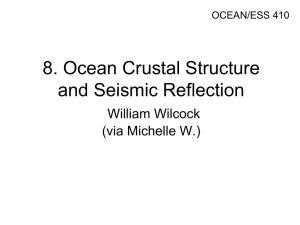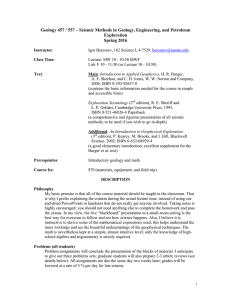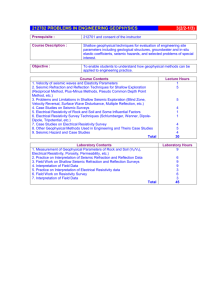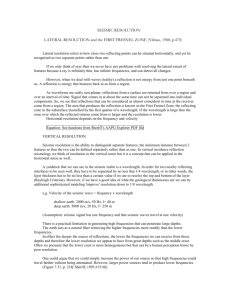Geophysics Exam 1
advertisement
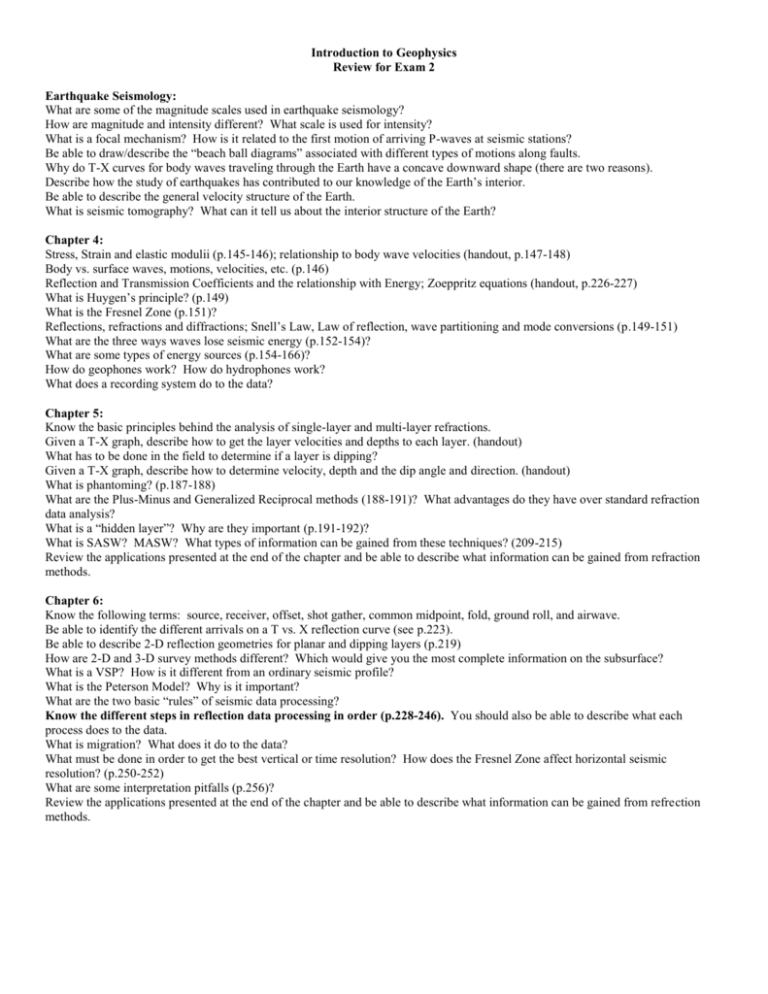
Introduction to Geophysics Review for Exam 2 Earthquake Seismology: What are some of the magnitude scales used in earthquake seismology? How are magnitude and intensity different? What scale is used for intensity? What is a focal mechanism? How is it related to the first motion of arriving P-waves at seismic stations? Be able to draw/describe the “beach ball diagrams” associated with different types of motions along faults. Why do T-X curves for body waves traveling through the Earth have a concave downward shape (there are two reasons). Describe how the study of earthquakes has contributed to our knowledge of the Earth’s interior. Be able to describe the general velocity structure of the Earth. What is seismic tomography? What can it tell us about the interior structure of the Earth? Chapter 4: Stress, Strain and elastic modulii (p.145-146); relationship to body wave velocities (handout, p.147-148) Body vs. surface waves, motions, velocities, etc. (p.146) Reflection and Transmission Coefficients and the relationship with Energy; Zoeppritz equations (handout, p.226-227) What is Huygen’s principle? (p.149) What is the Fresnel Zone (p.151)? Reflections, refractions and diffractions; Snell’s Law, Law of reflection, wave partitioning and mode conversions (p.149-151) What are the three ways waves lose seismic energy (p.152-154)? What are some types of energy sources (p.154-166)? How do geophones work? How do hydrophones work? What does a recording system do to the data? Chapter 5: Know the basic principles behind the analysis of single-layer and multi-layer refractions. Given a T-X graph, describe how to get the layer velocities and depths to each layer. (handout) What has to be done in the field to determine if a layer is dipping? Given a T-X graph, describe how to determine velocity, depth and the dip angle and direction. (handout) What is phantoming? (p.187-188) What are the Plus-Minus and Generalized Reciprocal methods (188-191)? What advantages do they have over standard refraction data analysis? What is a “hidden layer”? Why are they important (p.191-192)? What is SASW? MASW? What types of information can be gained from these techniques? (209-215) Review the applications presented at the end of the chapter and be able to describe what information can be gained from refraction methods. Chapter 6: Know the following terms: source, receiver, offset, shot gather, common midpoint, fold, ground roll, and airwave. Be able to identify the different arrivals on a T vs. X reflection curve (see p.223). Be able to describe 2-D reflection geometries for planar and dipping layers (p.219) How are 2-D and 3-D survey methods different? Which would give you the most complete information on the subsurface? What is a VSP? How is it different from an ordinary seismic profile? What is the Peterson Model? Why is it important? What are the two basic “rules” of seismic data processing? Know the different steps in reflection data processing in order (p.228-246). You should also be able to describe what each process does to the data. What is migration? What does it do to the data? What must be done in order to get the best vertical or time resolution? How does the Fresnel Zone affect horizontal seismic resolution? (p.250-252) What are some interpretation pitfalls (p.256)? Review the applications presented at the end of the chapter and be able to describe what information can be gained from refrection methods.

